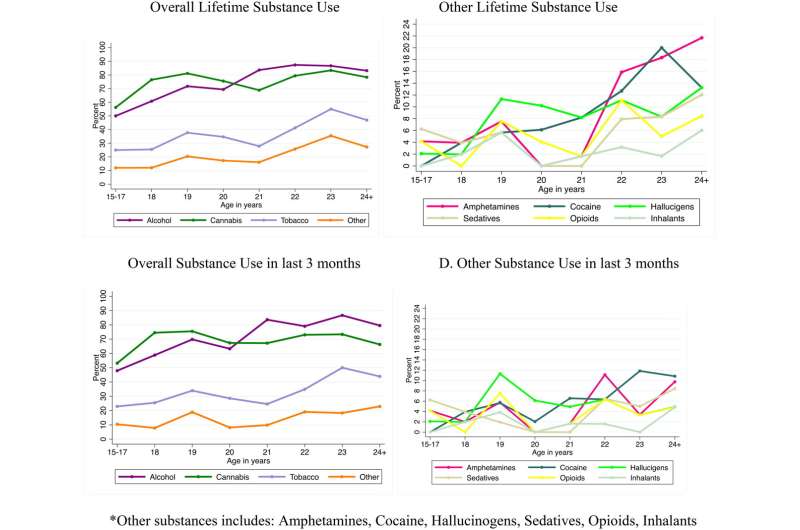This article has been reviewed according to Science X's editorial process and policies. Editors have highlighted the following attributes while ensuring the content's credibility:
fact-checked
trusted source
proofread
Investigating how patterns of polysubstance use are associated with sexual partnership factors

Researchers from Children's Hospital of Philadelphia (CHOP) and Johns Hopkins University School of Medicine studied how high levels of substance and polysubstance use are associated with sexual practices, and partner characteristics that can reinforce risk for HIV acquisition or transmission among Black and Latinx sexual youth as well as gender minority youth. The findings were recently published in the journal Substance Use & Misuse.
Adult studies have demonstrated that polysubstance use increases the risk of acquiring HIV through increased sexual behaviors; however, few studies have examined polysubstance use in young Black and Latinx sexual minority men and transgender women.
The study, led by Renata Arrington Sanders, MD, Chief of the Craig-Dalsimer Division of Adolescent Medicine at CHOP, included 466 young Black and Latinx sexual minority men and transgender women living in four high HIV-burden cities in the United States, assessed patterns of polysubstance use by comparing age differences of use and explored associations between substance use and sexual partnership factors.
Researchers found that relationships between polysubstance use and characteristics of sexual partners, for example, older partners and pressure to engage in sex without a condom, may make youth vulnerable to HIV due to impaired judgment and decision-making with substance use, and limited negotiation alongside power imbalances within older partnerships.
These findings highlight the need for combination interventions that include substance use treatment alongside antiretroviral-based prevention and treatment, partner-based interventions, IPV and safety planning services, and individual support to develop condom negotiation skills to address HIV disparities among Black and Latinx sexual and gender minority youth.
More information: Renata Arrington-Sanders et al, Patterns of Polysubstance Use in Young Black and Latinx Sexual Minority Men and Transgender Women and Its Association with Sexual Partnership Factors: The PUSH Study, Substance Use & Misuse (2023). DOI: 10.1080/10826084.2023.2267655



















